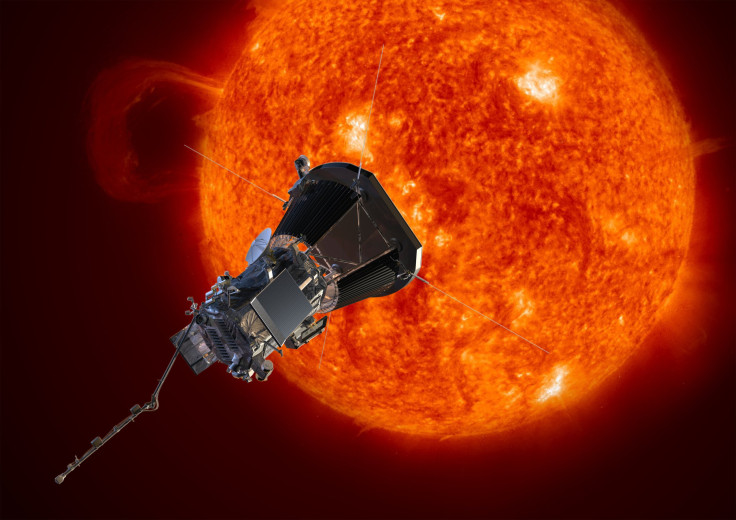NASA Mission To The Sun: Parker Solar Probe Sets 2018 Launch

The Parker Solar Probe, named after the NASA researchers who discovered solar wind, is making great strides toward its 2018 launch date. The probe previously called the Solar Probe Plus mission, was renamed in May to honor astrophysicist Eugene Parker.
After it launches it will head straight for the sun, something that’s never been done by a craft before. It will fly to the sun’s atmosphere, also called the corona, where temperatures reach 900,000 degrees Fahrenheit. The corona isn’t well understood by researchers so this historic mission to touch the sun will hopefully unlock a wealth of secrets and new understanding for researchers.
To ensure that the probe will be able to withstand the high temperatures in the corona, the craft will have a heat shield that will protect it. It’s made of a carbon composite material with an outer coating that will likely reach 2,500 degrees, according to NASA. That shield was added to the craft last week for the first and only time before just a few days prior to launch. It was attached solely to test for alignment and will be removed soon. A time lapse video shows the installation of the thermal protection system, also known as the heat shield. It’s a four and a half inch thick shield that will protect the Probe.
The shield is designed to protect the probe not only from heat, but also from the extremely cold temperatures it will face during its travels through space. Not to mention that it will help block dust particles and radiation from hitting or damaging the craft.
The probe is scheduled for a July 31, 2018 launch from the Cape Canaveral Air Force Station in Florida. It will then make several orbits of the sun using Venus to gain speed. It will also have solar panels to help power it and keep its equipment and instruments working on its journey. While it’s traveling around the sun at 430,000 miles per hour it will dip into the atmosphere and once it does, it will officially be the first craft to touch the sun.
The instruments will hopefully help researchers understand why the corona is actually warmer than the surface of the sun. They know that heat must be transferring to the corona by some means that heat doesn't transfer on Earth. The instruments include magnetic instruments that measure plasma waves, a particle suite and a white light imager.
When it takes its measurements it will be just 4 million miles from the surface of the sun. The closest any probe has ever come to a star. It will also be able to provide data on solar activity like flares that can contribute to space weather and conditions on Earth.
© Copyright IBTimes 2025. All rights reserved.




















